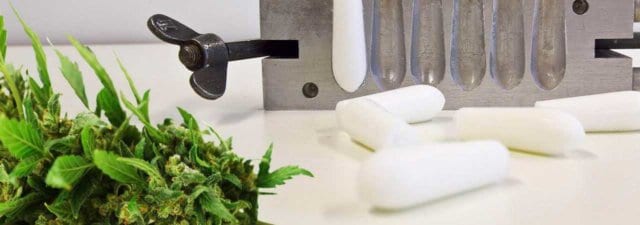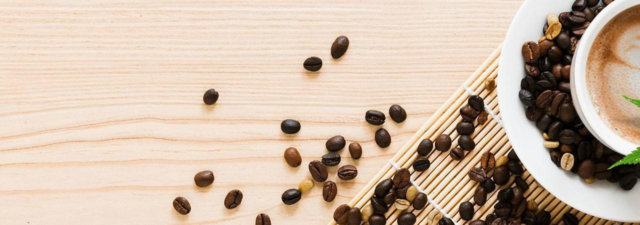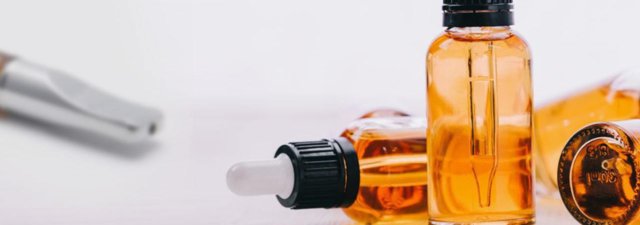In this article, we check out the science behind antibacterial CBD ointment. Is it an effective treatment or just a fad? Here’s all you need to know and more.
Antibacterial CBD Ointment
Bacteria are all around us. They live in soil, in water, even on our skin and in our guts. These single-celled microorganisms have a highly complex relationship with human beings. Some are beneficial, even necessary for our health. However, some can cause extreme harm under certain conditions.
If the wrong kind of bacteria enters the bloodstream, they can cause severe infections and even death. For this reason, it is critical to keep wounds clean and free from bacteria. And this is where antibacterial CBD ointment comes into the picture.
Recent research has shed light on the antibacterial properties of CBD and other cannabis compounds.
Over the past few decades, research has shed light on the antibacterial properties of CBD and other cannabis compounds. Some studies even suggest that they could play a role in treating antibiotic-resistant strains such as MRSA (methicillin-resistant staphylococcus aureus).
Later, we’ll explain all about antibacterial CBD ointment and how it works. But first, let’s take a look at why you might want to use this product.
Preventing Bacterial Skin Infections
Millions of tiny bacteria live all over our skin. One of the most common strains is Staphylococcus aureus, sometimes simply known as staph.
Under normal circumstances, these bacteria do not pose a threat to our health. However, if they enter the bloodstream through a cut or bite, an infection can occur.
When bacteria enter the body, the immune system springs into action. It triggers a series of reactions, including increasing blood flow to the area. This allows white blood cells to travel to the injury more quickly to neutralize the threat.
This increase in blood flow causes the infected area to become red, hot, and swollen. These are the symptoms that we typically refer to as inflammation. It is a normal part of the immune response but can be extremely uncomfortable.
As the infection clears, white blood cells break down to form a white or yellow fluid called pus. It can cause the affected area to blister, weep, or crust over.
In most people, bacterial skin infections will heal by themselves within a few days. However, people with weak immune systems may struggle to clear the infection without the aid of antibiotics.
If the infection spreads throughout the blood to the internal organs, it can cause problems such as septicemia (blood poisoning). This condition can be dangerous, and in some cases, even fatal.
Therefore, it is important not to underestimate the risks of bacterial skin infections. Most doctors recommend cleaning all wounds and applying antibacterial ointment as soon as possible. Doing this should help to reduce the risk of a serious infection.
Aside from these infections, some other common bacterial skin infections include cellulitis and impetigo.
So, how could CBD ointment help with these common problems? Let’s look at the science behind the compound and its antibacterial properties.
The Antibacterial Properties of Cannabis and CBD
CBD is just one of the many chemicals that cannabis plants produce. It belongs to a class of compounds called cannabinoids. All plants in the species Cannabis sativa L. produce cannabinoids, including drug-type marijuana and industrial hemp.
The main difference is the concentrations of each cannabinoid that these plants produce. Marijuana tends to produce higher levels of the intoxicating cannabinoid, THC. On the other hand, industrial hemp produces more CBD and just trace amounts of THC.

Furthermore, THC and CBD are not the only chemicals in the plant that influence the human body. Cannabis also produces a range of other active compounds, including terpenes and flavonoids.
Research is ongoing, but it appears that all three classes of compounds could possess antibacterial properties. Here’s what we know so far:
Cannabinoids
Scientists were studying the antibacterial properties of cannabinoids as far back as the 1970s. A 1976 study for the Dutch journal Antonie Van Leeuwenhoek investigated the activity of CBD and THC against staphylococci and streptococci bacteria.
The results showed that the two cannabinoids inhibited the growth of both bacteria in broth, although their efficacy reduced in blood/serum. The research also suggested the compounds were effective against gram-positive but not gram-negative bacteria.
A later 2008 study for the Journal of Natural Products supported these results. It suggested that cannabinoids have the potential to fight MRSA. The study looked at a full range of cannabinoids, including:
Although the study determined that these cannabinoids were effective, its authors were unable to pinpoint their precise mechanism of action.
Terpenes
Terpenes are oily compounds that give cannabis its distinctive aroma. In nature, their role is to protect the plant against various pests and diseases. Therefore, it is unsurprising that terpenes seem to play a vital role in the antibacterial properties of cannabis.
A 2001 study for Flavour and Fragrance Journal looked at the antibacterial properties of industrial hemp. It included the essential oils of five different cultivars (strains) of the plant. The essential oils contained a wide variety of terpenes, including:
- Alpha-pinene
- Myrcene
- Trans-beta-ocimene
- Alpha-terpinolene
- Trans-caryophyllene
- Alpha-humulene
Each cultivar contained different levels of terpenes, and each had varying degrees of antibacterial activity.
The authors tested a total of 21 different microorganisms, and the essential oils were effective against 11 of these. They concluded that industrial hemp has “modest” antimicrobial activity.
However, later studies such as this one for Fitoterapia and this one for Molecules showed more significant results. The latter concluded that hemp essential oils showed “good antibacterial activity” against gram-positive bacteria. Its authors attributed this in large part to the presence of terpenes.
Flavonoids
Flavonoids are another vital component of cannabis. These chemicals are probably best-known for their health-boosting antioxidant effects. However, they may possess some antibacterial properties too.
A 2018 study for the Journal of Integrative Medicine took this idea a step further. Its results suggest that flavonoids could enhance the efficacy of other antibacterial substances. The research looked at extracts from Cannabis sativa, Thuja orientalis (a type of conifer), and Psidium guajava (guava).
The authors found that each plant extract possessed antibacterial properties on its own. However, when they mixed Cannabis sativa and Psidium guajava with Thuja orientalis, this significantly enhanced their effects.
The authors went on to state that the plants appeared to have a “profound synergism” with one another. They suggested that this phenomenon was probably due to high levels of flavonoids, including:
- Quercetin
- Gallic acid
- Catechins
This synergy between compounds is of particular relevance when it comes to antibacterial CBD ointment. In the cannabis industry, it is commonly known as the ‘entourage effect.’
CBD Antibacterial Ointment and the Entourage Effect
The entourage effect is something that consumers should consider when purchasing CBD antibacterial ointment. This is because CBD products fall into three general categories:
- Full-spectrum CBD
- Broad-spectrum CBD
- CBD isolate
Full-spectrum products contain a full range of cannabinoids, terpenes, and flavonoids. They may include some THC, although this is usually only present in trace amounts (under 0.3%). Since these products are the most complete and natural, they likely have the most synergy between their compounds.
Broad-spectrum products are similar to full-spectrum, but minus the THC. They contain the majority of cannabis compounds, allowing for some degree of the entourage effect to take place. Broad-spectrum CBD products are ideal for anyone wanting to utilize the synergy of whole-plant cannabis without the THC.
Anyone wishing to use CBD ointment for skin infections should choose a full-spectrum or broad-spectrum product.
Finally, CBD isolates are the purest form of CBD. They do not contain THC or any other cannabis compounds. While they may be beneficial for some conditions, their antibacterial properties will be limited.
Therefore, anyone wishing to use CBD ointment for skin infections should choose a full-spectrum or broad-spectrum product. Doing this will allow them to benefit from all of the antimicrobial chemicals in the cannabis plant, not just CBD.
Furthermore, consumers should only buy from reputable brands who publish third-party lab reports on their websites. These reports show that each product contains everything it should and nothing more. They also allow you to see a detailed breakdown of the product’s cannabinoid and terpene content.
Antibacterial CBD Ointment: Final Thoughts
Research shows that CBD and other cannabis compounds possess significant antibacterial activity. Furthermore, the cannabinoids, terpenes, and flavonoids in the plant may work together to provide an enhanced, synergistic effect.
Therefore, when choosing a CBD antibacterial ointment, it is best to opt for a full-spectrum product. Doing this will mean that you benefit from all that cannabis has to offer, just as nature intended.
Although the existing studies are promising, it is critical to note that these were conducted in labs and not on human subjects. The effectiveness of CBD ointment for skin infections in the real world still needs to be confirmed.
Always consult a medical professional if you suspect you have a bacterial skin infection. This is especially important if you have low immunity, or your symptoms do not improve after a few days.
Your doctor will tell you the best course of action and whether antibacterial CBD ointment is appropriate for you.













